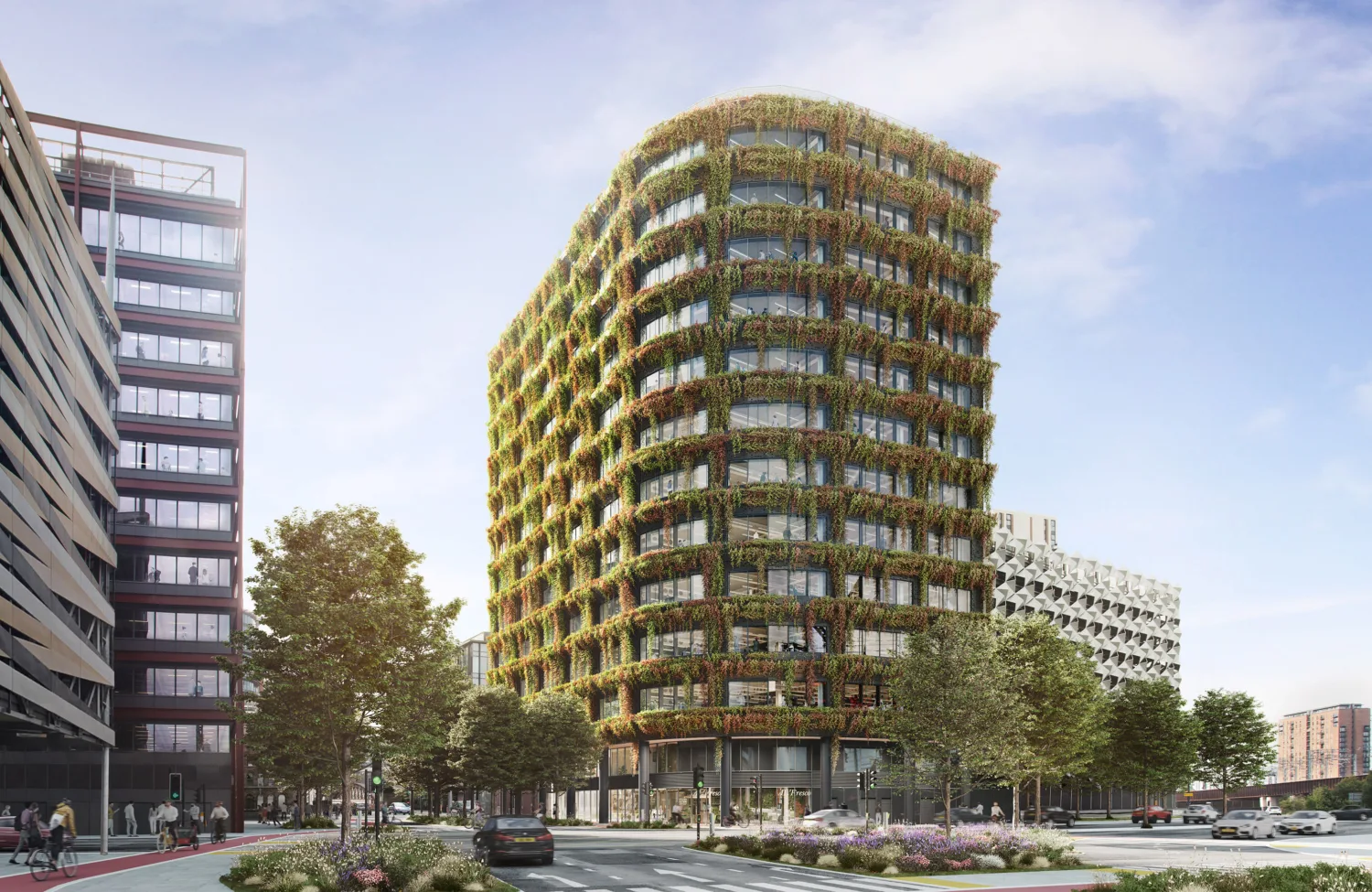Energy crisis or positive pivot point?
作者

David Collins
查看个人简介There are two stand-out features of the 2022 Australian energy crisis that can be understood as game-changing moments for the net zero building business case. The first is the skyrocketing price of onshore reticulated gas supplies that saw energy costs double in some places, almost overnight. The second thing – which is also partly connected to gas prices – is the near-collapse of the national energy market and urgent need for demand reductions to prevent blackouts.
If we look at this from the perspective of a building or portfolio owner, this heightens the benefits to be gained from changing what kind of energy they consume and how that consumption is managed.
Full electrification is the best insurance against gas price rises and corresponding increases in operational costs for hot water, space heating and gas-burning cooking equipment. The Australian Competition and Consumer Commission in early 2022 reported that domestic gas contract prices for commercial and industrial users increased from $6-$8/gigajoule in late 2020 to about $7-$9.5 by mid-2021 and by the start of 2022 spot prices have reached around $10/11GJ, with the market showing high volatility and the ACCC also flagging potential shortfalls due to onshore LNG producers taking gas out of the domestic market to meet global demand.
Another consequence of the gas price rises is a rise in electricity pricing, as gas-powered generation currently supplies a significant proportion of electricity generation capacity. In 2020, for example, it provided an estimated 20% of all electricity. In the context of the national energy market, the cost of gas-fired electricity often defines the spot price, which also contributed to the sharp rise in electricity bills for many energy users in 2022.
Then, just to add the final layer of challenge, a major cold snap coincided with a quarter of the national energy market’s 23,000 MW of coal-fired capacity being off-line due to either maintenance or unplanned outages while the global price of coal and gas soared as a result of the invasion of Ukraine by Russia disrupting global energy trade.
This combination of factors – high demand and reduced supply - pushed the grid to the brink and destablised the market to the extent the Australian Energy Market Operator suspended the national energy trading market entirely for a short period and urgent calls went out from the federal government and state governments for domestic consumers to switch off any unnecessary appliances to prevent blackouts.
It is hard to think of a better illustration of ‘the case for ramping up energy-efficiency and going all-electric with maximised renewables’.
Energy-efficiency, smart energy systems, onsite renewables and onsite energy storage are the best way to ensure resilience when peak demand events strain the local grid.
In the context of the bigger picture also, the more rapidly we improve the energy efficiency of all existing buildings, and ensure new assets are optimised for all-electric operation and efficiency, the less likely it is we will risk blackouts due to insufficient energy supplies.
It really cuts through the oft-cited hurdle for existing buildings that there is insufficient incentive for energy-efficiency for asset types including residential, retail, hospitality, aged care and small commercial buildings not subject to Commercial Buildings Disclosure legislation and the related NABERS ratings requirements.
The incentive of having a resilient, efficient and future-ready building needs to be front of mind.
For new buildings, full electrification and optimised efficiency delivers multiple benefits including being positioned to operate at net zero.
In one example, engineering out gas appliances and mains gas connection for the new six-storey Rockpool Carseldine Residential Aged Care development will significantly reduce operational costs and reduce the health and wellbeing risks associated with combustion of gas including air pollutants. The electric induction cooking equipment being specified also drastically reduces the risk of burns.
The other aspects of the engineering design include a fabric-first and passive solar building design; designing for natural daylighting and ventilation; right-sized highly efficient mechanical systems; and electric heat pump hot water systems for domestic uses and laundry. Taken as a whole, these elements mean the development will consume less energy that an equivalent development designed and built to minimum construction code compliance standards which is common practice.
Having a much smaller energy demand also makes it more affordable to supply 100% renewable energy through a combination of on-site renewables and offsite renewable electricity sourced through Green Power or a Power Purchase Agreement. Any remaining emissions are then offset through the purchase of high-quality carbon offsets.
For existing buildings, starting on the path to full electrification and net zero is begins with a strategic plan to address energy efficiency improvements first to gain operational cost savings, then reinvesting those savings in capital projects to replace ageing gas-burning equipment with all-electric, high-efficiency alternatives.
The conventional approach to plant reaching the end of its operational life has been like-for-like replacement in that gas-burning equipment is replaced with new gas-burning equipment. Continuing with this approach, however, means an asset owner remains exposed to volatile gas prices, potential carbon pricing, health and safety impacts and the increasing likelihood maintenance and repair of gas-fired equipment will become harder to obtain as the quantity of it in the property sector shrinks and the gas-fitting trade skill base does also.
Also, in terms of the heating value obtained per dollar, electric equipment can outperform gas. Our calculations show that $10 of gas heating can generate 257MJ of heating, but $10 of electricity can produce up to 432MJ of heating using efficient electric heat pump equipment.
In working with portfolio owners or building owners pursuing staged electrification of existing assets, we use a similar net zero pathway approach to that applied to design and delivery of a new asset, staged over a longer timeframe but with the same goal of reducing mains grid energy demand and energy-related emissions overall. As the IPCC has observed – existing buildings are one of the most affordable and fastest ways for us to reduce carbon emissions.
What we are clearly seeing with recent events is that fast-tracking improvements to every building is also imperative to improve overall resilience.
From a national perspective, energy efficiency is inseparable from complete electrification and decarbonisation of the energy grid. Demand is the measure of how much energy we need to have in the system – it dictates how many new solar farms, wind farms or other renewable sources we need to bring on-line to turn off gas-fired and coal-fired power forever. If every building went all-electric tomorrow, due to systemic underinvestment in new, renewable generation capacity, the grid in its current form and supply capacity would not provide sufficient energy for all.
For that reason, proceeding with electrification needs to be balanced with demand management and storage options, at the grid, community and individual building level.
That is why when we develop pathways for existing assets or portfolios we always start with energy efficiency so the overall energy footprint is smaller and can be met with all-electric, all-renewable sources as we progress with phasing out gas in every building.
Let’s not call it an energy crisis. Let's approach this moment in time as an opportunity: a positive energy turning point.
“Energy-efficiency, smart energy systems, onsite renewables and onsite energy storage are the best way to ensure resilience when peak demand events strain the local grid.”
David Collins
The incentive of having a resilient, efficient and future-ready building needs to be front of mind.
For new buildings, full electrification and optimised efficiency delivers multiple benefits including being positioned to operate at net zero.
In one example, engineering out gas appliances and mains gas connection for the new six-storey Rockpool Carseldine Residential Aged Care development will significantly reduce operational costs and reduce the health and wellbeing risks associated with combustion of gas including air pollutants. The electric induction cooking equipment being specified also drastically reduces the risk of burns.
The other aspects of the engineering design include a fabric-first and passive solar building design; designing for natural daylighting and ventilation; right-sized highly efficient mechanical systems; and electric heat pump hot water systems for domestic uses and laundry. Taken as a whole, these elements mean the development will consume less energy that an equivalent development designed and built to minimum construction code compliance standards which is common practice.
Having a much smaller energy demand also makes it more affordable to supply 100% renewable energy through a combination of on-site renewables and offsite renewable electricity sourced through Green Power or a Power Purchase Agreement. Any remaining emissions are then offset through the purchase of high-quality carbon offsets.
For existing buildings, starting on the path to full electrification and net zero is begins with a strategic plan to address energy efficiency improvements first to gain operational cost savings, then reinvesting those savings in capital projects to replace ageing gas-burning equipment with all-electric, high-efficiency alternatives.
The conventional approach to plant reaching the end of its operational life has been like-for-like replacement in that gas-burning equipment is replaced with new gas-burning equipment. Continuing with this approach, however, means an asset owner remains exposed to volatile gas prices, potential carbon pricing, health and safety impacts and the increasing likelihood maintenance and repair of gas-fired equipment will become harder to obtain as the quantity of it in the property sector shrinks and the gas-fitting trade skill base does also.
Also, in terms of the heating value obtained per dollar, electric equipment can outperform gas. Our calculations show that $10 of gas heating can generate 257MJ of heating, but $10 of electricity can produce up to 432MJ of heating using efficient electric heat pump equipment.
In working with portfolio owners or building owners pursuing staged electrification of existing assets, we use a similar net zero pathway approach to that applied to design and delivery of a new asset, staged over a longer timeframe but with the same goal of reducing mains grid energy demand and energy-related emissions overall. As the IPCC has observed – existing buildings are one of the most affordable and fastest ways for us to reduce carbon emissions.
What we are clearly seeing with recent events is that fast-tracking improvements to every building is also imperative to improve overall resilience.
From a national perspective, energy efficiency is inseparable from complete electrification and decarbonisation of the energy grid. Demand is the measure of how much energy we need to have in the system – it dictates how many new solar farms, wind farms or other renewable sources we need to bring on-line to turn off gas-fired and coal-fired power forever. If every building went all-electric tomorrow, due to systemic underinvestment in new, renewable generation capacity, the grid in its current form and supply capacity would not provide sufficient energy for all.
For that reason, proceeding with electrification needs to be balanced with demand management and storage options, at the grid, community and individual building level.
That is why when we develop pathways for existing assets or portfolios we always start with energy efficiency so the overall energy footprint is smaller and can be met with all-electric, all-renewable sources as we progress with phasing out gas in every building.
Let’s not call it an energy crisis. Let's approach this moment in time as an opportunity: a positive energy turning point.






